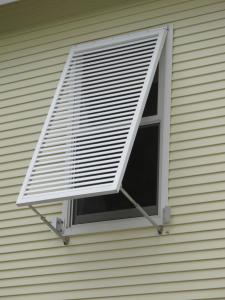IEA EBC Annex 80 Resilient Cooling
IEA EBC Annex 80 Resilient Cooling
In June 2019, the International Energy Administration Energy in Building and Communities (IEA EBC) Programme launched Annex 80: Resilient Cooling, an international collaborative research project to develop, assess and communicate solutions of resilient cooling and overheating protection.
About

Lawrence Berkeley National Laboratory and the University of California, Berkeley Center for the Built Environment will represent the U.S. in Annex 80 activities.
The term “resilient cooling” denotes low energy and low carbon cooling solutions that strengthen the ability of individuals and communities to withstand and prevent thermal and other impacts of changes in global and local climates. Annex 80 activities encompass the assessment and research & development of both active and passive cooling technologies of the following four groups:
- Reduce externally induced heat gains to indoor environments
- Enhance personal comfort apart from cooling whole spaces
- Remove sensible heat from indoor environments
- Control latent heat (humidity) of indoor environments
Use of affordable and effective passive/low-energy cooling measures can help U.S. homes and businesses adapt to increasingly frequent extreme heat events in three ways. First, it will make building occupants more resilient to hot weather, boosting comfort, health, and productivity. Second, it will make building cooling systems more resilient to hot weather, improving their ability to meet cooling load. Third, it will make the electric grid more resilient to hot weather, reducing the number of hours each year in which power demand, spiked by extraordinary demand for air conditioning, exceeds power supply. These measures could reduce illness and death in disadvantaged communities where residents lack air conditioning. They will also benefit any community subject to scheduled or unscheduled power outages.
Lawrence Berkeley National Laboratory (LBNL, prime) and the UC Berkeley Center for the Built Environment (CBE, sub) will contribute to Annex Subtasks A, B, and D over the course of this four-year project (FY2020 – FY2023). We will leverage our deep expertise in (a) using solar-control envelope technologies (advanced windows, shading, and cool roofs/walls) and no/low energy ventilation (natural ventilation; low-power fan ventilation that can be powered from PVs, batteries, and/or standby generators) to reduce externally induced heat gains to the indoor environment, remove heat from the indoor environment, and otherwise improve occupant thermal comfort through the use of air movement to remove body heat; and (b) evaluating hourly thermal loads, HVAC energy use, and occupant comfort with simulation tools such as EnergyPlus and the CBE comfort model (http://comfort.cbe.berkeley.edu).
The PI is Ronnen Levinson (LBNL). Other key participants include Nari Yoon, Charlie Curcija, Weng Fei, Christian Kohler, Iain Walker, and Lino Sanchez (LBNL); Haley Gilbert (subcontractor to LBNL); and Hui Zhang, Edwards Arens, and Paul Raferty (CBE).
US Annex 80 Team Objectives
The US team has the following objectives in support of the Annex objective.
- Develop performance metrics (KPIs) by which to evaluate the ability of various passive and low-energy technologies to make people, cooling systems, and the power grid more resilient to extreme heat.
- Develop technology profiles that use these performance metrics to assess passive cooling technologies, focusing on advanced windows, shading, cool roofs/walls; and no/low power ventilation.
- Develop suites of passive/low-energy resilient cooling solutions (such as those listed in the previous bullet) optimized for homes, especially older buildings, in at least two U.S. climates, with special attention to selecting strategies that are both effective and accepted by homeowners and tenants.
- Integrate resilient cooling strategies in local, national, and international policies, standards, guidelines, and programs that promote energy efficiency, occupant comfort, and occupant safety.